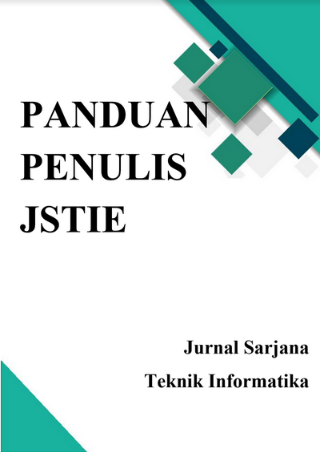Pengembangan User Interface (UI) dan User Experience (UX) Aplikasi Cashoop Untuk Pengelolaan Keuangan Pribadi
DOI:
https://doi.org/10.12928/jstie.v7i1.15801Keywords:
Pengelolaan Keuangan, Personal Finance, User Interface, User Experience, usabilityAbstract
Pengelolaan finansial yang baik sangat membantu individu maupun keluarga dalam mengambil keputusan-keputusan finansialnya. Saat ini aplikasi pengelolaan keuangan juga marak seperti MyFamily Accounting, Amplop.In dan NgaturDuit. Akan tetapi ketiga aplikasi tersebut memiliki beberapa kelemahan antara lain masih dalam versi desktop dan web saja. Dari hasil analisis aplikasi sebelumnya masih berbasis desktop yang dikoneksikan dengan Pocket PC. Aplikasi ini memiliki kelemahan dari sisi teknologi yang sudah lawas dan sangat jarang digunakan yaitu Pocket PC dan juga aplikasi desktop yang sudah ditinggalkan. Dengan meninjau masalah ini dibutuhkan suatu solusi yaitu merancang desain user interface dan user experience aplikasi Cashoop yang membantu para pengguna untuk mengelola keuangan pribadinya dengan lebih efektif, efisien dan memuaskan dari sisi usability. Metodologi yang digunakan dalam penelitian ini yaitu melakukan pengumpulan data menggunakan mrtode kuisioner. Kemudian dilakukan analisis data, deskripsi kebutuhan sistem dan pembuatan UML (Unified Modelling Language). Tahap selanjutnya adalah perancangan desain user interface dan user experience aplikasi cashoop, dan pengujian user interface dan user experience ini dengan menggunakan metode pengujian Usability Post Task (SEQ) dan Post Study (SUS). Berdasarkan hasil pengukuran desain user interface dan user experience aplikasi cashoop berbasis mobile yang dikembangan sesuai dengan pengujian usability terbukti membantu dalam proses pengembangan dan hasil pengukuran tingkat keberhasilan pengguna sebesar 100%, pengukuran kemudahan penguna dengan nilai rata-rata skor SEQ 5,1 (mudah) dan pengukuran kepuasan pengguna dengan nilai rata-rata SUS responden 71,08 (Acceptable).References
Ardiansyah (2012). Analisis Pengambilan Keputusan Berbasis Personal Finance Information Systems, Seminar Nasional Teknologi Informasi dan Komputasi (SENASTIK) Program Studi Informatika Universitas Trunojoyo Madura, 13-14 November 2012. pp. SI.141-SI.147. ISSN 2302-7088
Ardiansyah, & Sujatmiko, A. (2007). MyFamily Accounting. Indonesia: Dirjen HKI Kemenhukam RI.
Rochim, A. N., Hasbi, M., Irawati, T. (2011), Aplikasi Pengelolaan keuangan pada PT. Jala Prokreasi Surakarta, Surakarta: Sinus
Galitz, WO. 2002. The Essential Guide To User Interface Design: An Introduction To GUI Design Principle and Techniques. Ed ke-2. John Willey & Sons, Inc, Canada.
Garret, James.J. 2011. The Eements of User Experience: User -Centered Design for the Web and Beyond. Ed ke-2. New Riders Publishing, United State of America.
Sauro, jeff. 2011. Measuring Usability with the System Usability Scale (SUS). Available at: http://www.measuring.com/sus/. [15 Maret 2017]
Sauro, J, & Lewis, J. R (2012). Quantifying the User Experience: Practical Statistics User Research. (S. Elliot, Ed.) (I.). USA: Elsevier.
Bangor, A., Kortum, P ., & Miller, J. (2009). Determining What Individual SUS Scores Mean : Adding an Adjective Rating Scale. Journal of Usability Studies, 4(3), 114-123.
Downloads
Published
Issue
Section
License
License and Copyright Agreement
In submitting the manuscript to the journal, the authors certify that:
- They are authorized by their co-authors to enter into these arrangements.
- The work described has not been formally published before, except in the form of an abstract or as part of a published lecture, review, thesis, or overlay journal. Please also carefully read Journal Posting Your Article Policy.
- The work is not under consideration for publication elsewhere.
- The work has been approved by all the author(s) and by the responsible authorities – tacitly or explicitly – of the institutes where the work has been carried out.
- They secure the right to reproduce any material that has already been published or copyrighted elsewhere.
- They agree to the following license and copyright agreement.
Copyright
Authors who publish with Jurnal Sarjana Teknik Informatika agree to the following terms:
- Authors retain copyright and grant the journal right of first publication with the work simultaneously licensed under a Creative Commons Attribution License (CC BY-SA 4.0) that allows others to share the work with an acknowledgement of the work's authorship and initial publication in this journal.
- Authors are able to enter into separate, additional contractual arrangements for the non-exclusive distribution of the journal's published version of the work (e.g., post it to an institutional repository or publish it in a book), with an acknowledgement of its initial publication in this journal.
- Authors are permitted and encouraged to post their work online (e.g., in institutional repositories or on their website) prior to and during the submission process, as it can lead to productive exchanges, as well as earlier and greater citation of published work.







